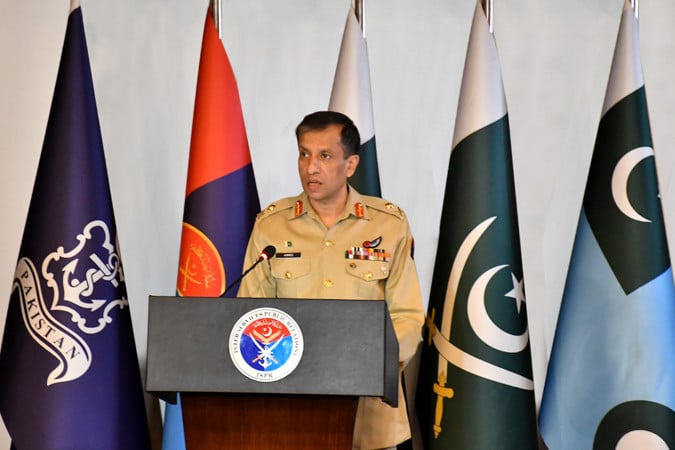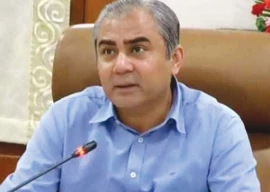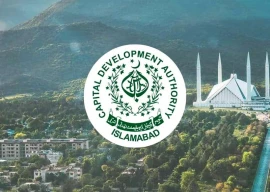
The army clarified on Monday that the operation Azm-e-Istehkam was not a military operation rather a counter-terrorism campaign, with the top military spokesperson saying that a strong lobby did not want the National Action Plan (NAP) to succeed.
The director general of the Inter-Services Public Relations (ISPR), Lt-Gen Ahmed Sharif Chaudhry, told a news conference in Rawalpindi that extremists involved in attacks on the law-enforcement personnel and the digital terrorists shared the common goal of targeting the military and its leadership.
Comparing Azm-e-Istehkam to past operations like Zarb-e-Azb and Rah-e-Nijat is not appropriate, General Sharif said. Our problem is that serious issues in the country are also politicised. Azm-e-Istahkam is an example of this, he added.
The government has also said that the Operation Azm-e-Istehkam is a coordinated counter-terrorism campaign, not a military operation, the ISPR chief said, responding to a question. He insisted that a narrative was being created to make Azm-e-Istehkam controversial.
During the press conference, a journalist asked General Sharif about comparisons being made between past operations Rah-e-Nijat and Zarb-e-Azb and Azm-e-Istahkam, and concerns raised among political circles about the possible displacement of local people.
The DG ISPR said the June 22 statement by the NAP Apex Committee clearly stated that the civil and military leaders reviewed the progress on counter-terrorism efforts and agreed that there was a need for a comprehensive counter-terrorism campaign in the country.
Referring to that statement, General Sharif said that political parties would be consulted and legislation would be enacted for the counter-terrorism campaign in the country. However, he added that a narrative has been created that the operation would displace people and that it should be opposed.
This is a matter of our survival, and we turn even serious matters into a joke due to politics, he lamented. He said that terrorists were operating in the country through benami properties, smuggling, and non-custom paid vehicles, adding that an important goal of Operation Azm-e-Istehkam was to break the nexus between terrorism and crime.
Why is Azm-e-Istehkam being made controversial? A strong lobby wants the objectives of the National Action Plan and Azm-e-Istahkam not to be achieved. Why has a big mafia, a political mafia, an illegal mafia stood up from everywhere that we will not let this happen? They want to make it controversial based on lies, he asked.
The military spokesperson presented slides detailing the objectives of NAP, the actions taken so far, and other information, stating: We are conducting four to five intelligence-based counter-terrorism operations every hour.
Digital terrorism
The DG ISPR said that extremists involved in attacks on law-enforcement agencies and digital terrorists, who he said were active on social media platforms, shared the common goal of targeting the military and its leadership.
When asked by a journalist as to how the institution was dealing with criticism against the army chief, the institution, and the Special Investment Facilitation Council (SIFC).
General Sharif replied that digital terrorism was active on social media against the military and its leadership. Just as a terrorist tries to impose his will through weapons, similarly, a digital terrorist tries to impose his will by spreading anxiety through mobile phones, computers, lies, fake news, and propaganda, he added.
The military spokesperson said that there was very little information available about any digital terrorist, but both extremists and digital terrorists share the common goal of targeting the military. Digital terrorists are attacking the military, its leadership, and the relationship between the military and the public based on fake news.
He stated that only laws and punishments could stop digital terrorists. Continuously, obscene talk and fake news are spread against the military and other institutions leadership, he said. He warned that if digital terrorists were not stopped, they would get more space. We cannot allow those illegal elements, who want to make this country a soft state.
TLP sit-in
A journalist asked the military spokesperson whether the recent sit-in by Tehreek-e-Labbaik Pakistan (TLP) at Faizabad had any connection with the military or the establishment, General Sharif responded that the central issue was Palestine, and the government and militarys clear stance was that this was genocide, and unacceptable.
The government and institutions were trying to resolve this issue with sensitivity, without violence, through dialogue, he said. However, he added that propaganda started that the institution itself had arranged it. If tomorrow Jamaat-e-Islami sits or any other protest happens, will it also be claimed that the military organised it, he asked.
There is no accountability for fake news in the country. The facts are in front of you that this is a sensitive issue. If you solve it amicably, further speculations are made. All kinds of conspiracy theories circulate about this.
Meanwhile, he cited the example of a sit-in in Chaman, the city on the border with Afghanistan, where there was local opposition to the requirement of passports for cross-border movement. He claimed that illegal trade was promoted via the Afghan border.
The sit-in at the Chaman border, ongoing for nearly 10 months over the issue of cross-border movement, was called off on Sunday after the organisers demands were accepted. According to the government, movement from Chaman would now be based on ID cards and Afghan Tazkira, and those without a Pakistani ID card will be able to travel on an ID card token.

1725784957-0/Tribune-Pic-(17)1725784957-0-405x300.webp)
1724760612-0/Untitled-design-(12)1724760612-0-165x106.webp)















COMMENTS (4)
Comments are moderated and generally will be posted if they are on-topic and not abusive.
For more information, please see our Comments FAQ